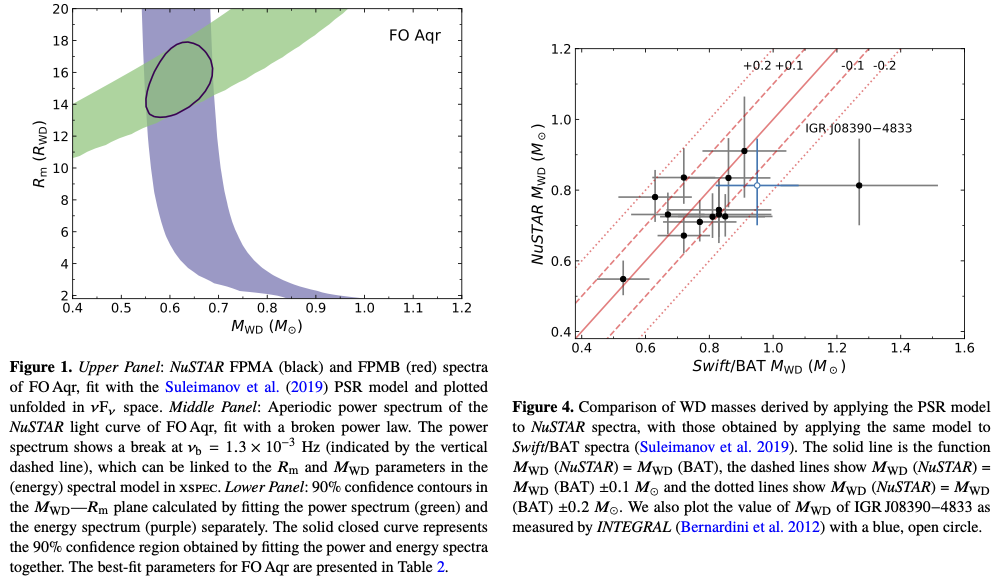Measuring the masses of magnetic white dwarfs: a NuSTAR legacy survey
A follow-up of our work with Valery Suleimanov on IPs has just been published. This time led by our US collegues (Thanks Aarran!). NuSTAR is a wonderful instrument, and much better than BAT when doing precise measurements for fainter objects! This allowed to correct couple of outliers we've got in earlier work with Valery Suleimanov, and overall, improve accuracy for mass measurements.

The hard X-ray spectrum of magnetic cataclysmic variables can be modelled to provide a measurement of white dwarf mass. This method is complementary to radial velocity measurements, which depend on the (typically rather uncertain) binary inclination. Here we present results from a Legacy Survey of 19 magnetic cataclysmic variables with NuSTAR. We fit accretion column models to their 20-78 keV spectra and derive the white dwarf masses, finding a weighted average M${WD}$=0.77$\pm0.02M\odot$, with a standard deviation $\sigma=0.1M_\odot$, when we include the masses derived from previous NuSTAR observations of seven additional magnetic cataclysmic variables. We find that the mass distribution of accreting magnetic white dwarfs is consistent with that of white dwarfs in non-magnetic cataclysmic variables. Both peak at a higher mass than the distributions of isolated white dwarfs and post-common-envelope binaries. We speculate as to why this might be the case, proposing that consequential angular momentum losses may play a role in accreting magnetic white dwarfs and/or that our knowledge of how the white dwarf mass changes over accretion-nova cycles may also be incomplete.